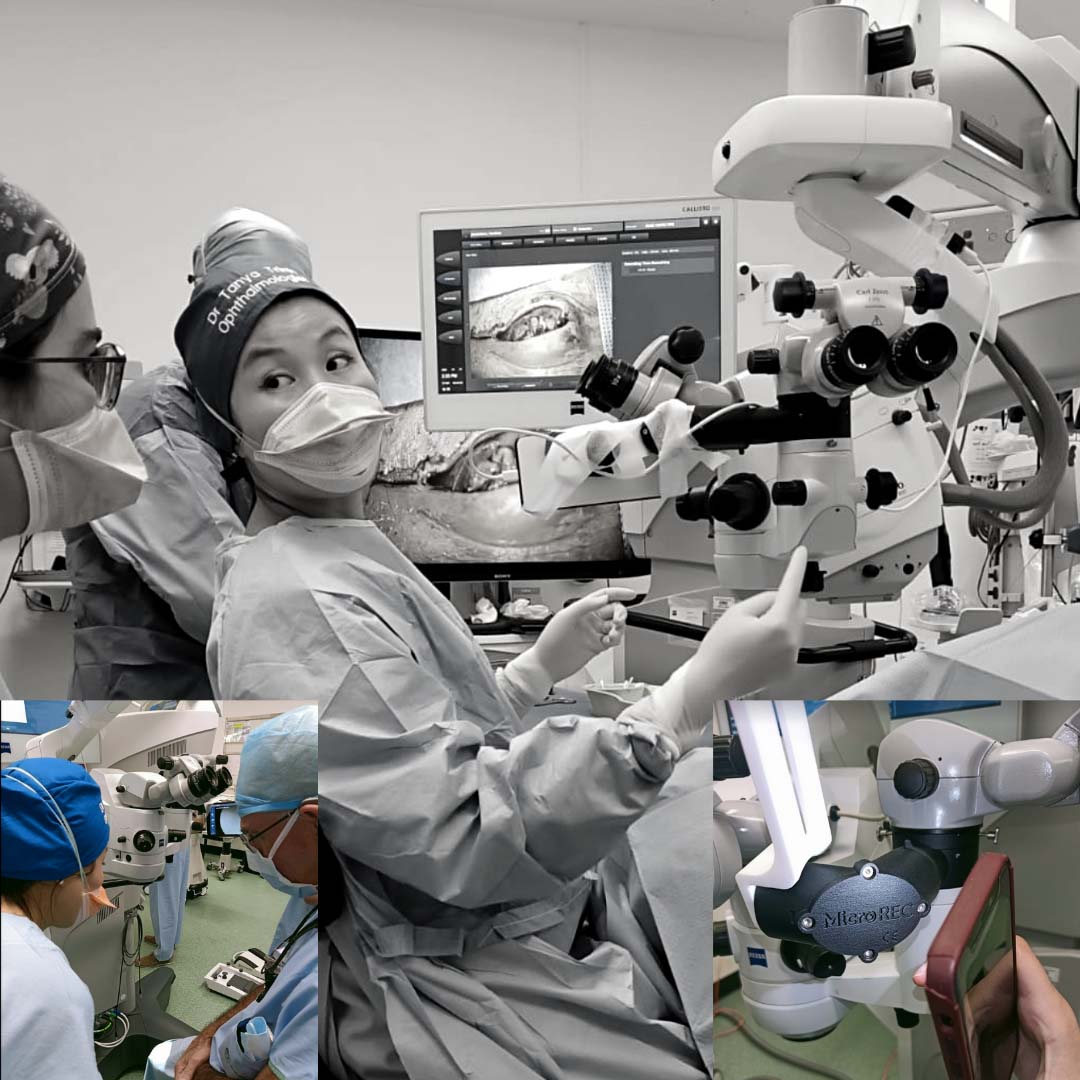When normal corneal transplantation techniques are highly likely to fail due to complications, The Australian Keratoprosthesis Service (AKS) steps in.

AKS was established at Sydney Eye Hospital and Save Sight Institute in 2014 by Drs Greg Moloney (cornea and oculoplastics specialist, Sydney), Colin Clement (glaucoma subspecialist, Sydney), Mark Gorbatov (retinal subspecialist, Sydney), and Shannon Webber (oral maxillofacial surgeon, Gold Coast).
The highly specialised ophthalmic clinic cares for people who are experiencing vision impairment in both eyes due to devastating corneal disorders. And with the support of the Sydney Eye Hospital Foundation and its donors, the service has grown in strength to save the sight of this unique subset of patients.
There are two highly specialised sight restoring procedures that AKS is known for; the Boston Keratoprosthesis (Type 1) and the modified osteo-odonto keratoprosthesis.
Prior to AKS being established, the Boston Keratoprosthesis device had not been implanted in Australia and patients had to travel to Singapore, the closest centre offering this service. This meant only those who could afford to travel were able to access the care they needed, and even then, time delays associated with travelling could potentially worsen their outcomes.
In the early days of its establishment, the AKS team was exceptionally fortunate to receive training and supervision from Dr Konrad Hille of Dusseldorf, Germany, a world-class pioneer in this area of surgery.
The Australian Keratoprosthesis Service now
Today, AKS is a multi-disciplinary, centralised referral centre for Australia with a clear and structured referral pathway. A team of expert ophthalmic surgeons review patients one day each month at Sydney Eye Hospital.
Dr Tanya Trinh is an ophthalmologist and cataract, corneal and refractive surgeon. She is just one of a handful of specialists in Australia trained in performing the complex procedures through AKS.
“It is an honour and a privilege to be entrusted with the health of someone’s eyes,” says Dr Trinh.
“Over time, many artificial corneas have been tried and there have been many, many failures. The one that is more commonly used in the world today is the Boston Keratoprosthesis, but this requires eyes with moist surfaces and functional eyelids to protect the device,” she says.
Dr Trinh says the modified osteo-odonto keratoprosthesis procedure serves those most vulnerable in the population who have eyes without functional, protective eyelids and present with dry surfaces.
“These surfaces are very hostile to normal cornea transplants and even to the Boston Keratoprosthesis. Think, for example, of those with severe burns or disfigurement, it’s these, most desperate of patients, who most doctors have given up on, that we are able rehabilitate,” says Dr Trinh.
“The surgeries we perform through AKS are for patients who have no other options available to them, so it is incredibly rewarding when we are able to save even just one person’s sight,” she says.
Very few centres in the world are able to offer the service to the highest level as AKS. The combined unit has specialists seeing each patient together in one session. This leads to instant collaboration between subspecialties for these extraordinary complex cases along with faster decision making. In addition, it offers the patient a one stop shop which means less emotional, financial and time stress.
“The AKS clinic also acts as a support network for patients with these unique and profoundly life changing experiences to connect with each other. The shared experience of having sight after so many years in the dark,” says Dr Trinh.
With charitable funding from the Sydney Eye Hospital Foundation and the public system, patients from all over Australia and New Zealand can access its service for free.
AKS continues to contribute to pushing medical and surgical frontiers with the team recently receiving accolades with research published in distinguished journals. Further they readily incorporate new technologies to ensure eye patients have the very best in care.
But as always, the experiences of patients – like Heather Pozzobon are where the real story lies.
Read more: Implanting a tooth in the eye gives sight back.
For further information and to ask about referrals, please contact jonathan.nguyen@sydney.edu.au.









